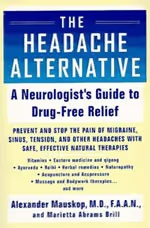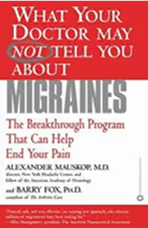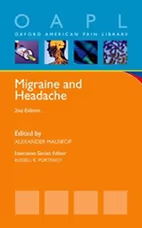Acupuncture
Acupuncture has truly withstood the test of time since it was first practiced in China for over two thousand years. Hundreds of modern scientific studies have shown that acupuncture works through the release of neurotransmitters in the brain, which can result in relief of pain and other conditions. The National Institutes of Health (NIH) recently convened a panel of experts who concluded that acupuncture has a scientific basis, and that it has demonstrated efficacy in some conditions. In others, additional studies are required. At our Center acupuncture is performed by the Director of the Center, Alexander Mauskop, M.D., who is a licensed acupuncturist. Unlike what many people imagine, acupuncture is usually a very pleasant experience. Many people fall asleep during the procedure. It is nearly painless because of a special insertion technique using very thin disposable needles. Each session lasts 20-30 minutes and a usual course of treatment consists of 10 weekly sessions.
ACUPUNCTURE
By: Alexander Mauskop MD
From: National Headache Foundation Newsletter
The first description of the use of acupuncture for the treatment of headaches is credited to a Chinese surgeon Hua Tuo (A.D. 110-207) in the Han dynasty. The fact that acupuncture has been used for thousands of years did not bring it a quick recognition in the western world. Only in the past five-to-ten years has acupuncture been given a solid scientific basis. Many physicians and patients, however, still consider acupuncture to a faith healing method. This in part is explained by the fact that the theory of traditional Chinese acupuncture is part of the general theory of traditional Chinese medicine, which includes the concepts of ying and yang, five elements, energy flows, pulse diagnosis, etc. It has become clear that even if these concepts are not taken into account, acupuncture is still very effective for the treatment of painful conditions, including headaches and facial pain.
PRACTICE OF ACUPUNCTURE
What is preserved in the modern version of acupuncture practice are specific, commonly-used acupuncture points where special acupuncture needles are inserted and left in place for about 20-30 minutes. In traditional acupuncture the needles are stimulated by twirling them. Some practioners pass a weak alternating current th rough the needles. Reports have appeared that describe the use of laser beam stimulation of the acupuncture points without the use of needles. Most of the studies that have been done in the west, however, used needles rather than laser beams. and most practitioners continue to use needles. The latter are usually made of stainless steel and are disposable. They are inserted into different points over the scalp, face, neck and hands depending on the type and location of the headache or facial pain. A needle guide can be used to make the insertion painless. The treatment course typically consists of weekly or twice-a-week sessions which may continue for weeks and with lesser frequency for months. Typically, after 5-6 sessions it is determined whether or not any improvement has occurred. Even if only a small reduction in frequency, severity or duration of headaches has occurred, it may be worthwhile to continue the treatment. On the other hand, if no improvement has occurred, the chances that acupuncture will work are small. It is an established fact that 15% of humans and animals alike do not respond to the pain relieving effect of acupuncture at all.
There are several advantages to having a physician to perform acupuncture. During the course of treatment, a physician can detect an organic cause of the headache that might not have been apparent on the initial examination and that may require specific therapy. Acupuncture alone may not be sufficient, but a combination of acupuncture with medications and/or biofeedback may stop the headaches. If acupuncture is not performed by a physician, the patient should have at least one neurological examination. Any sudden change in the pattern of headaches (unless itâs an improvement) should be evaluated by a physician. An additional benefit to having a physician perform acupuncture is that many insurance companies are more likely to reimburse the patient if the treatment is done by a physician.
BASIC MECHANISMS
It has been established in clinical and experimental studies on humans that acupuncture is better than placebo in the treatment of chronic pain. Animal experiments also confirm the objective nature of this response. A large body of research has identified some but not all mechanisms of action of acupuncture. Acupuncture activates small nerve fibers in the muscle. This activation is transmitted through the spinal cord to the midbrain and pituitary-hypothalamus. The pain relief mechanisms begin in the spinal cord where chemical messengers, enkephalin and dynorphin (neurotransmitters), block incoming painful messages. The center in the midbrain uses enkephalin to inhibit pain transmission using serotonin and norepinephrine. The hypothalamus-pituitary is the third center, which releases betaendorphrine into the blood and cerebrospinal fluid to cause analgesia at a distance. This mechanism seems to be operating when a low frequency stimulation is used.
CLINICAL STUDIES
The most objective way to prove effectiveness of any treatment is by using a double-blind study design. This means that neither the patient nor the person who performs and evaluates the treatment knows whether a real or sham treatment is being performed. Only by comparing two large groups of patients treated with real or sham therapy, can a definite conclusion about the effectiveness of the treatment be made. It is virtually impossible to perform a double-blind study to evaluate acupuncture. If in the control group the needles are inserted in the wrong locations, this will still produce an effect better than the placebo would. If no needles are inserted, the patient will obviously know it. Many studies have been performed without controls or with controls that received no treatment. These, so-called anecdotal reports, show improvement rates of 55%-85%, which is better than the placebo response that usually gives about a 33% improvement rate. In other, more scientific, controlled studies, control group of patients received acupuncture in wrong locations or had needles taped to the skin without inserting them. These studies also show a similar success rate of 55%-85%, which exceeds the success rate in the control groups. Although these studies offer no absolute proof of the effectiveness of acupuncture, circumstantial evidence is very strong and it is being supported by the basic research into the mechanisms of acupuncture.
In conclusion, acupuncture is a valid and scientifically based method of treatment of migraine, tension and other headaches as well as facial pain. It offers several advantages, such as almost no side effects or complications, low cost and high success rate. I feel that it should be tried early rather than as a last resort treatment when everything else has failed.
.jpg)



This “book” appears to have largely been born out of his blog from the New York Headache Center. For years, he has regularly put up information, scientific and clinical, for his headache followers. He has created this “book,” actually an e-book, which takes relevant information from his experience and knowledge of migraine. There is no need for an index and chapter references. He uses hyperlinks, embedded in the e-book, to connect to material online, which he puts in context for the reader. This works very well as one hyperlink may go to an original paper or publication or a resource site.
He links to major medical journals including headache journals and his own publications, when helpful, as well as nonmedical literature and other sites. This format allows the e-book to be updated from time to time, which is easy to do with this approach.
The book has a very interesting introduction and deals with evidence-based medicine and its role in migraine therapy. When he begins the section on 150+ treatments, he starts with a very interesting comment. Many of the treatment ideas that I describe in this book are not just off-label (that is, not approved by the FDA) but may appear to be off-the-wall. It is refreshing to hear such intellectual honesty from a practicing neurologist.
There is a great section on supplements and finding someone to help with your migraine, such as coach, a partner, or a sympathetic friend. A diagnostic discussion follows and is most helpful, as proper diagnosis directs treatment, as are the detailed sections on triggers including environment, food, exercise, physical therapies, and sleep. Herbal therapies are covered as is neuromodulation and injections/blocks among others.
In the sections on drugs, he deals with acute therapies and the modern use of triptans and gepants, and a ditan. Preventive therapies start with monoclonal calcitonin gene-related peptide antibodies, tricyclic medications, and many other preventive therapies including beta blockers, anti-seizure drugs, nonsteroidal anti-inflammatory drugs, and botulinum injections. From acupuncture to Feldenkrais methods, he covers the contemporary plethora of migraine “treatments” as he sees it in practice.
He ranks all medications on a 1 to 10 scale regarding his own subjective opinions of the utility of each treatment. He indicates that no treatment gets 10 as a score and any receiving a score of 1 were not rated. He also lists his favorite migraine therapies separately. He includes a lot of data links here, from single case reports to full-scale randomized clinical trials, and detailed reviews. His clinical acumen shines through the volume and one gets the impression that this is a very personal view at times, not always backed by evidence, as there may not be any, but by experience, practice and pragmatism. He carefully notes the general things to be careful of in taking some treatments and warns if there are serious concerns. Nonetheless, he indicates clearly that the advice of a medical professional should be sought before trying the therapies mentioned.
Diagnosing secondary headache that can mimic migraine or vice versa is a useful section but does not go into depth about the disorders/diseases mentioned, as this is not the intention of the book. Special circumstances are given sections including menstrual migraine, pregnancy, resistant/refractory headache, aura and headache, and many others.
The author is a senior, highly experienced neurologist and has a high degree of interest in migraine and other headache disorders. He has a sense of curiosity about the brain and migraine and that comes through to the reader of this small volume. I count 23 endorsements, including the excellent foreward of the book from a wide range of well-known people, which includes two prior editors of this journal. He is well liked and highly respected by his colleagues.
In many ways, this book does what online databases on diseases cannot do most times. He tells the reader what he knows and how to use that knowledge. He directs the novice and experts to the right literature and takes the reader on a personal journey through the field of migraine treatments. He tells people, “…keep seeking relief, not to give up on or blame yourself for the pain you experience from migraine.”
There is a printed version of the book; however, the e-book is ideal for the intended purpose. I would recommend it the first instance. It is available via a commercial site and inexpensive.
I would recommend this book to anyone who has migraine or cares for people with migraine and wants a broad and sometimes detailed overview of the treatments. Available in the e-book format, it represents a lot of work for one person, but his passion, occasional humor, and historical perspectives are evident in this work. You don’t have to agree or accept everything the author says to enjoy and benefit from this “book,” and I know he would want people to be critical and skeptical where warranted. However, you will find more than you would usually need to know from this banquet of 150 ways to help your migraines! Enjoy, I did very much. Read it through once and save as reference.
Alexander Mauskop, Director of the New York Headache Center, and Marietta Abrams Brill, a freelance medical writer, have written principally for headache sufferers in North America. They answer questions like “is Rolfing covered by medical insurance?”, and include an excellent resource section in the back. of the book which lists American organizations for the various therapies. But they provide enough background information on both headache and alternative treatments to make their book interesting to readers from other countries, too. In covering most of the more common alternative therapies~like herbs, acupuncture, massage, Ayuverda and Eastern medicine, and qigong-they aim to inform rather than judge, cite research evidence where it exists, and point to potential dangers as well as benefits.
Each of the 10 chapters is introduced with a pithy quote: “Divine is the work to subdue pain” (Hippocrates) heads the first chapter. After general background on pain theories and headache diagnosis, common alternative approaches are covered in turn and there is, of course, oodles of advice on diet and nutrition. A helpful glossary guides readers through words that conventional doctors are familiar with, like Scotoma, and those with which we aren’t, like Qi, Vatta, and Pitta. To round off, a comprehensive resource section and selected bibliography give useful directions to readers wanting more information about specific therapies.
Like all good guides, this one follows a logical structure and so it is relatively simple to go quickly to the information you want to find. It is easy to read. All in all, it is a guide which headache sufferers looking for good information on alternative therapies can be thankful for.
